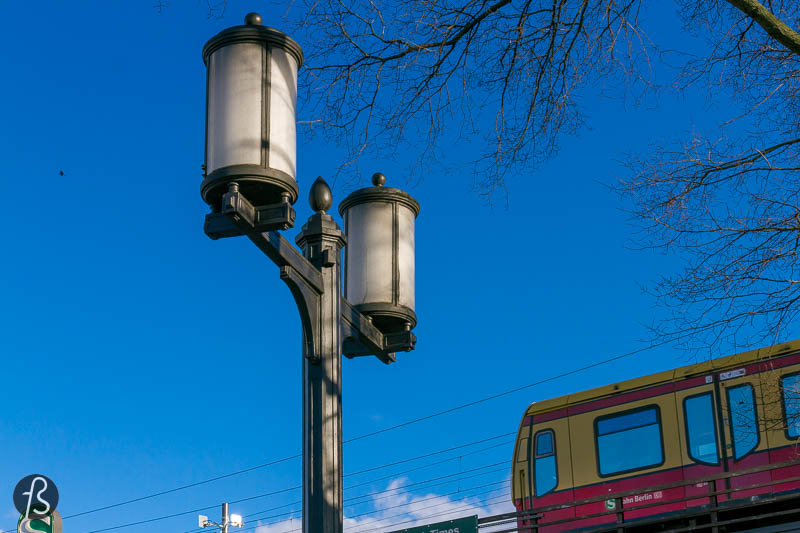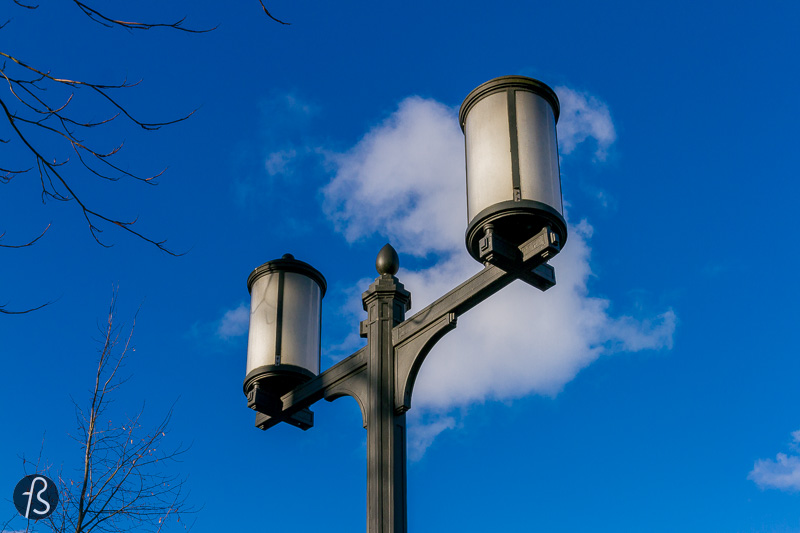Berlin is a city that pulsates with history and bears the unforgettable marks of its tumultuous past. Especially when you consider the last century. Among the most striking and haunting remnants are the monuments of the Nazi Architecture era. This period sought to reshape the city into the grandiose capital of “Germania.”
Today, some of these structures still stand as stark reminders of a dark chapter, offering a chilling glance into the ambitions and ideologies of the Third Reich. If you want to know about Nazi architecture in Berlin, you have come to the right place.

Berlin’s Dark Legacy: Exploring What Remains of Nazi Architecture Today
When I moved to Berlin in 2012, I wasn’t expecting to see so many bullet holes left over from the Second World War. But they are all around town; you just have to know where to look, and you will see them. I believe the same thing happened with Nazi Architecture in Berlin. Once you know the patterns, the structures and the history behind them, you will spot them all around town.
Below, you will learn a little about some of them, including the most important ones still standing today.

The Luftwaffe Building on Wilhelmstrasse: A Monument to Air Power
Our journey begins with the former Luftwaffe Ministry, also known at the time as the Reichsluftfahrtministerium. This colossal structure once symbolized the might of the Nazi air force. With its imposing facade and expansive scale, this building reflects the regime’s obsession with power and control.
The Ministry was responsible for developing and producing all aircraft designed and built in Germany during the Third Reich. It oversaw all aspects related to both military and civilian aircraft. Its top priority was military aviation, particularly for the Luftwaffe.
Its sheer size was intended to intimidate and impress, a memorial to the Nazis’ desire to project an image of invincibility that still stands on Wilhelmstrasse. Today, it houses the German Finance Ministry, the Bundesministerium der Finanzen in German.


The 1936 Berlin Olympics: A Stage for Nazi Propaganda
The 1936 Berlin Olympics, while celebrated as a sporting event, served as a powerful tool for Nazi propaganda.
The games were designed to showcase a new Germany, aiming to surpass the Los Angeles Games of 1932. To achieve this, Berlin built a new stadium for track and field events, which has a capacity of 100,000 seats and is still in use today. Additionally, the city constructed six new gymnasiums and several other smaller arenas and sports facilities.

The meticulously planned event showcased the regime’s supposed efficiency and modernity, masking its sinister intentions. The Olympic Stadium itself, with its monumental architecture, became a symbol of Nazi power.
Albert Speer Street Lights in Berlin
Check out the Albert Speer street lights to discover some of Berlin’s lesser-known design pieces. As we all know, Albert Speer was a prominent architect in Nazi Germany and oversaw much of Berlin’s redevelopment plan.
Starting at Tiergarten S-Bahn station, you’ll notice a shift in the streetlight design as you walk toward Charlottenburger Tor. These sleek lights line Straße des 17. Juni, Bismarckstrasse, and Kaiserdamm, ending at Theodor-Heuss Platz.


Originally named Adolf-Hitler-Platz, the square was central to Speer’s vision for the city. Today, while the square has a different name, the street lights remain.

The Germania Project and the Schwerbelastungskorper
The “Germania” project, Hitler’s vision for a transformed Berlin, was to create a monumental city reflecting his version of the glory of the Third Reich. While much of the project remained unrealized, its remnants can still be seen in the city’s architecture.
There is a place between Kreuzberg and Schöneberg with a peculiar German name. The Schwerbelastungskorper, or the heavy load-bearing body, was placed there to test the ground for the planned Triumphal Arch. Today is a mournful reminder of this grandiose but ultimately failed vision.
Weirdly, if you have seen the TV series The Man in the High Castle on Amazon Prime, you have seen a few samples of what this city would look like.

A Place of Mobilization in the shape of the Messe Berlin
Messe Berlin, a sprawling exhibition center, played a crucial role in the Nazi war machine. It served as a hub for mobilization and propaganda, hosting rallies and exhibitions that promoted the regime’s ideology.
The immense scale of the complex serves as a reminder of the Nazi regime’s extraordinary capacity to meticulously organize and exert control over vast populations. Its layout and numerous facilities reflect the efficiency of its operations and illustrate the chilling extent to which it could manage resources, personnel, and the logistics of an entire bureaucratic system dedicated to its goals.

Interestingly, today, one of the most unusual buildings in Berlin stands next to Messe Berlin, which is called ICC Berlin. Based on the pictures, I often go there for ITB, the World’s Leading Travel Trade Show.

Tempelhof Airport as a Gateway to Power
Tempelhof Airport, significantly expanded during the Nazi era, was intended to be a gateway to the new “Germania.” Its massive terminal building, sweeping curves and monumental proportions reflect the regime’s ambition to create a world-class capital.
The airport’s design also incorporated military features, highlighting the Nazis’ focus on militarization. And I love that today, it’s a public park close to one of the most diverse neighborhoods in Berlin: Neukölln.

The ensemble of buildings at Fehrbelliner Platz
Fehrbelliner Platz was largely undeveloped until the 1920s and was planned as a large horseshoe-shaped town square.
Architect Helmut Remmelmann designed buildings in a neoclassical style. Unlike other buildings constructed in the same period on the square, this one features conventional brickwork and a plastered façade. The circular courtyard, lined with columns, takes inspiration from the police headquarters in Copenhagen, which was built between 1919 and 1924.
Today, the original Nazi-era buildings contrast strongly with the modernist-looking U-Bahn station. Every time I pass the area, I have to take pictures.
Interestingly, the structure that used to be the German Labour Front building was the headquarters of the British occupying forces Lancaster House until 1953.

Bunkers and Flak Towers: Defending the Third Reich
The construction of bunkers and Flak towers across Berlin reveals the Nazis’ obsession with defense and security. These massive concrete structures, designed to withstand air raids, served as shelters and defensive platforms.


Many of these old bunkers are still standing in Berlin today—so many that a few years ago, I decided to hunt some down and write a full article about them.
The Legacy of Nazi Architecture
The architectural legacy of the Nazi era in Berlin is complex and multifaceted. While often imposing and intimidating, these structures serve as important historical documents, offering valuable insights into the regime’s ideology and ambitions. By exploring these sites, we can gain a deeper understanding of this dark chapter in history and ensure that its lessons are not forgotten.
By visiting these sites, tourists and locals alike can learn more about the history of Berlin, the impact of the Nazi regime and the many mistakes made at the time.

